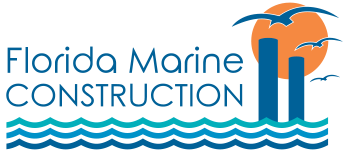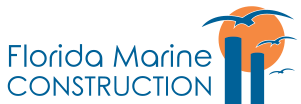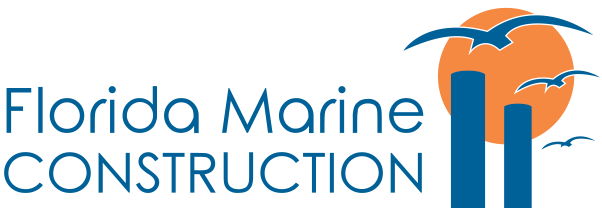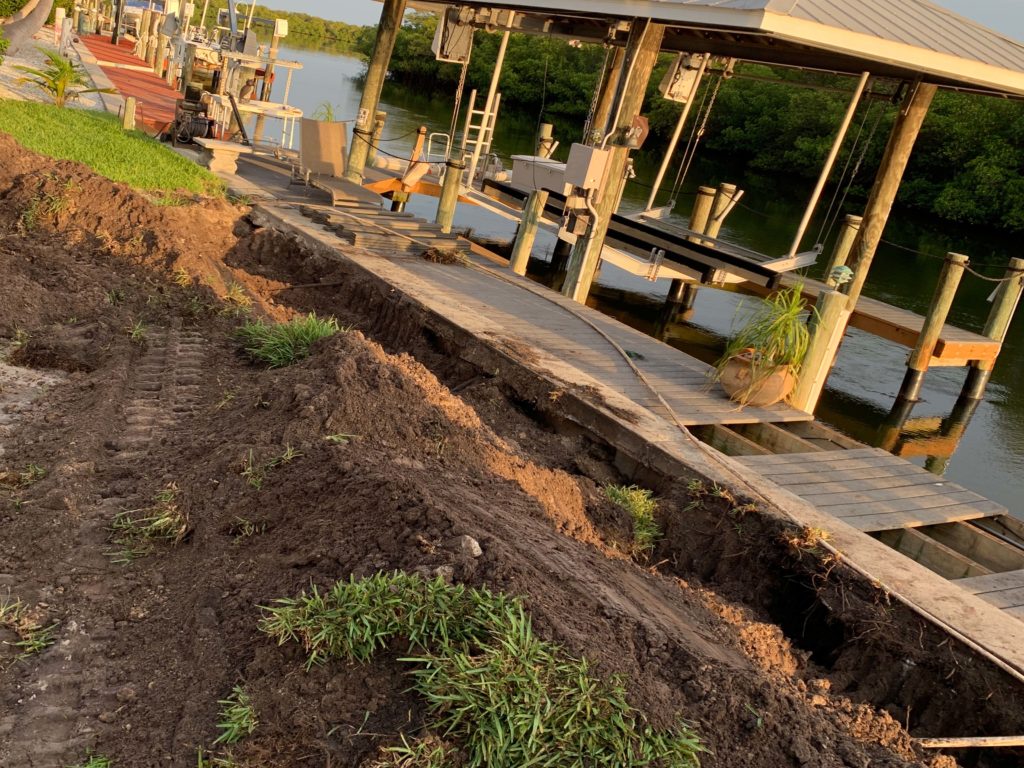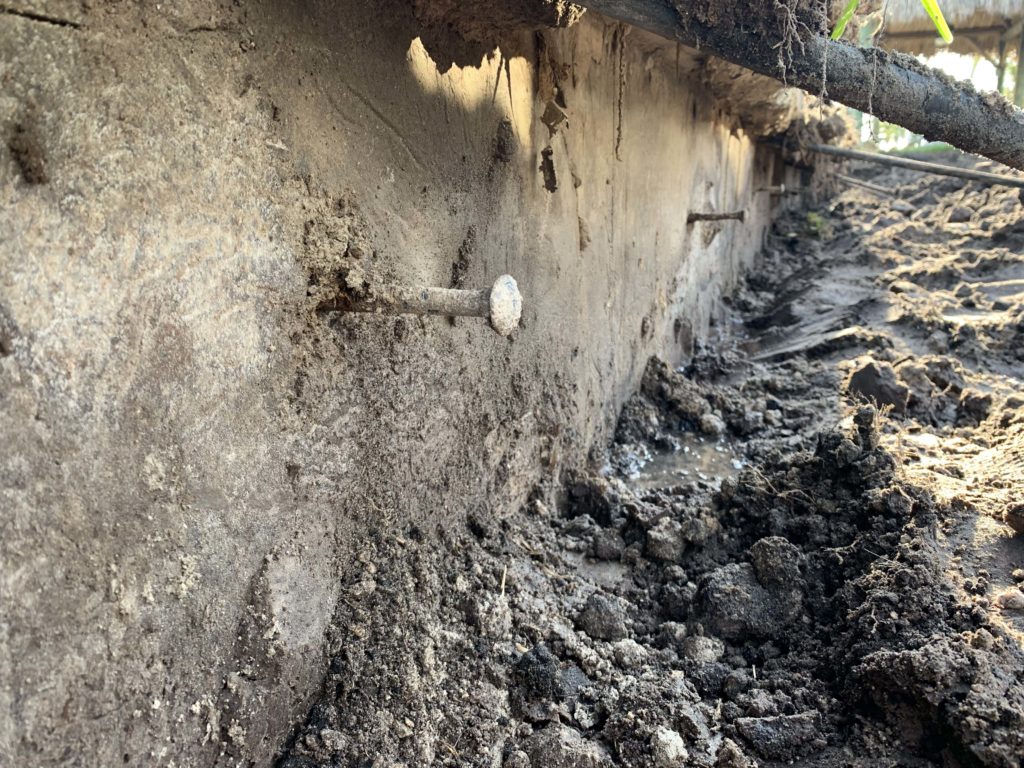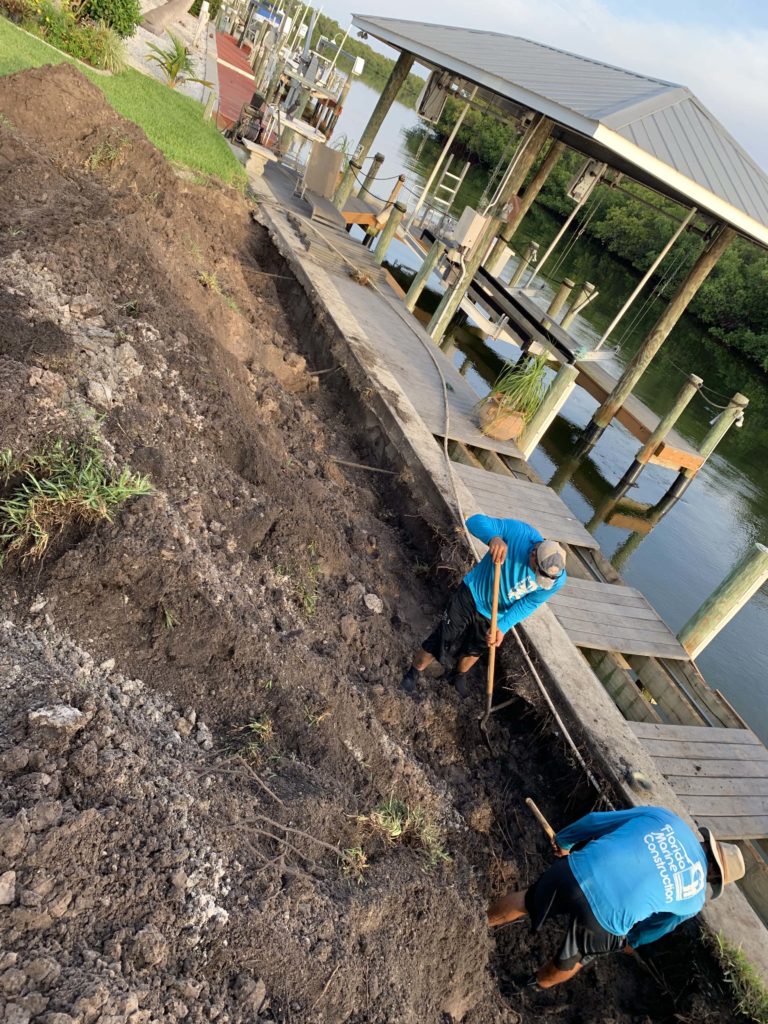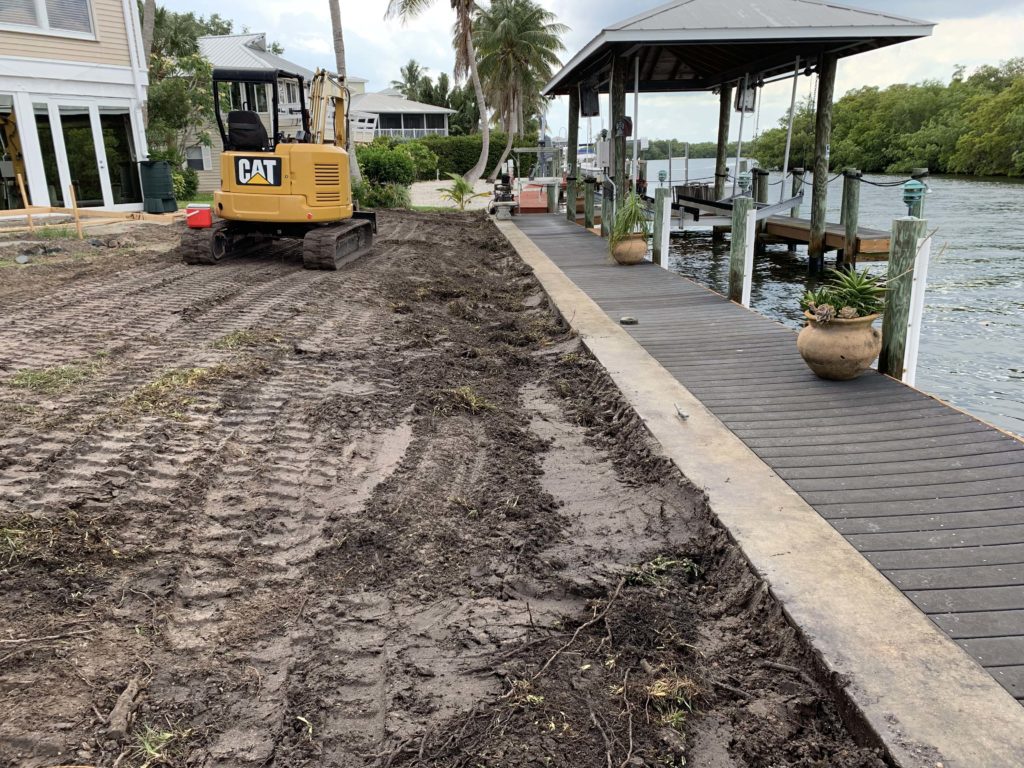Step foot onto Southwest Florida’s hidden gem, St. James City and you may never return home again. The 7-mile drive south from the 4-way stop at the Pine Island Center is a drive back to ole Florida country. The pristine bay waters, sunsets and delicious seafood at waterfront restaurants, have the trappings of an exotic, tropical island without even having to leave the country.
Project Challenges
The owner had elected to install a exquisite new swimming pool on his bay view property. Prior to the excavation of the pool shell it was determined that the existing tie-backs and concrete dead men required removal. Our initial site visit revealed other crucial defects with the existing concrete seawall. There was significant soil loss and settling, creating migrating soils through the seawall seams from the upland property.
The Solution
Florida Marine Construction had to deploy our specialty equipment to proceed with this seawall stabilization project. Our Caterpillar mini-excavator was mobilized to the site along with our Cat telehandler to facilitate installation of concrete prestressed piling .
The engineered designed process is a system of concrete piling being placed in front of an existing seawall to permanently stabilize the structure. This supplemental piling process replaces the traditional steel tie-back/deadman anchors. Normally, Florida Marine Construction would secure the existing concrete seawall with a supplementary helical tie-back anchor system. Unfortunately, the soils were too poor to provide proper load bearing of anchors.
The concrete piers were advanced to depths of approximately five (6) feet beneath the base of seawall panels. The pilings were 14 foot in length.
Florida Marine Construction was also tasked with eliminating soil migration through the existing seawall seams. This methodology entailed scrapping the marine organisms off the concrete seawall and seams. We then installed a backer rod that has a closed cell exterior into the seams ,which is permeable, to allow water to escape but contain soil properties. A ¼” P.V.C. panel was attached to the wall and fastened with ¼” 316 Stainless Steel “Rawl” anchors.
In addition , we installed H.D.P.E. seawall drains every five (5) foot to provide ample drainage and relief of hydrostatic pressure from behind the existing seawall. The drains required core drilling a 2 ½” hole through the existing concrete and then attaching the drains with 316 stainless steel tap cons.
We applied an epoxy adhesive to secure contact and bonding between the drain and concrete elements.
Product
The prestressed piles were installed by Florida Marine Construction, a Certified Installer of Seawall Savers and Chance Helical Foundations Systems.
Concrete Piles
Twelve (12) 10” x 10” x 14’ square concrete prestressed piling were installed with an “Allied” hydraulic drive head. The Caterpillar excavator progressed the piling to depths of six foot to achieve final installation penetration.
Seawall Seam Repair
Twenty-four (24) ¼” P.V.C. panels were attached to the seawall seams and fastened with ¼” 316 Stainless Steel anchors. The actual seams were filled with various diameters of backer rod to eliminate soil loss.
Seawall Drains
Florida Marine Construction installed twenty-four (24) seawall drains in conjunction with repairs. The synthetic drains were attached to the concrete seawall with stainless steel anchors.
